 PICS: GLOBAL INCLUSIVE ADVENTURE |
Basnet was among the 10 Nepali women who ascended Mt Everest in May 2008 as part of the First Inclusive Women Sagarmatha Expedition (see box). During their gruelling 45 day trek, Basnet, Pujan Acharya , Maya Gurung (pictured right, on Mt Elbrus), Asha Kumari Singh, Nimdoma Sherpa, Pema Diki Sherpa, and Chunu Shrestha became close friends and met in Thamel every week to catch up.
On 1 January 2009, the seven friends formed the Everest Women Seven Summits Eco-Action team and mapped out their future plans."It was our New Year resolution of sorts," Basnet explains. "We didn't want to go back to our normal lives. We wanted to fulfil bigger dreams and inspire people."
In 2010, the team scaled Mt Kosciuszko in Australia and Mt Elbrus in Russia. Africa's Mt Kilimanjaro is next on their to-do-list for spring 2013. The United Nations World Food Programme has agreed to sponsor a part of the Kilimanjaro climb and the team is offering public hikes every Saturday to hills near Kathmandu Valley to raise the remaining amount.
However, their journey to the top has been an uphill battle and they have had to overcome immense personal and financial obstacles. Pema, 24, and Nimdoma, 21, belong to poor families. Nimdoma's father died when she was 15 and she has been supporting her family ever since. 33-year-old Gurung ran away from her home in Sindhupalchok at 14 when she found out her family was planning to marry her off.
Even after their successful climb of Mt Everest, funding for their Mt Elbrus trip was hard to come by and they had to use their personal savings to cover half of the two million budget.
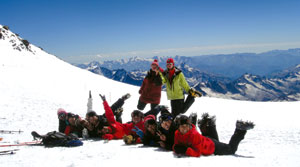 CONQUERING RUSSIA: Tanya and Ludmila (standing, l-r), the only woman to have climbed all seven summits along with Usha Bista, Pema Diki Sherpa, Shailee Basnet, Maya Gurung, Nimdoma Sherpa, Asha Kumari Singh, Chunu Shrestha, Ngabhang Phuti Sherpa, and Pujan Acharya (below, l-r) pause for a picture on Mt Elbrus, Russia. |
In the male-dominated world of climbing, only 51 out of the 300 climbers who have scaled the seven peaks are women. And despite the rise in female trekking guides and climbers in Nepal, there is an immense gender disparity with men far outnumbering women in mountaineering expeditions.
"Before Everest, the older generation in particular had a hard time accepting us. They seemed uncomfortable with the idea of young, female mountaineers. They would ask us why we are climbing mountains, instead of finding 'regular' jobs, earning money, or getting married," says Pema.
"But now people listen to us," adds Basnet proudly. "They say you have climbed Everest, now you can do anything."
Today the women are role models both at home and abroad. They have visited more than 100 schools across Nepal as well as universities in the US and Australia where they talk about their achievements, setbacks and the value of hard work and perseverance. Gurung, who dreams of transforming the lives of women in her trafficking-plagued district will be speaking to Nepalis living in Singapore and Malaysia in July.
Everywhere the women go, the response is overwhelming and students say they feel hopeful about pursuing dreams they once thought were impossible.
"Many young Nepali girls have low self-esteem and hesitate to follow their dreams," says Chunu Shrestha. "We want to reach out and tell them that if they believe in themselves, they can achieve their goals and do as well as men. Even physically and mentally demanding tasks like climbing Mt Everest is not out of reach."
See also:
Nepali women climbers set the pace, ALONZO LUCIUS LYONS
"Their success in the male-dominated world of Himalayan climbing will encourage Nepali women to follow their dreams, even when the path is a precarious, uphill ascent." Stephanie Maxheim, French climber
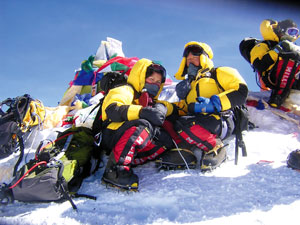 TOP OF THE WORLD (l-r): Shailee Basnet and Pema Diki Sherpa summit Mt Everest |
Ascent to the top of the world
After an intense 10 month training programme that involved rock climbing, ice-slamming and running at high altitudes, the team of 10 Nepali women from diverse ethnic communities summited Mt Everest on 25 May 2008. Before them, only seven Nepali women had reached the top on separate occasions. The expedition was organised by veteran mountaineers like Pemba Dorje Sherpa, DaGombu Sherpa and Susmita Maskey.The highest mountain in each of the continent:
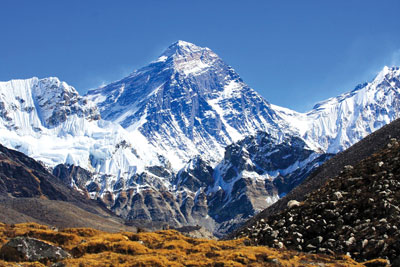 Mt Everest at 8848m in Nepal-China (Asia) |
 Mt Aconcagua at 6962m in Argentina (South America) |
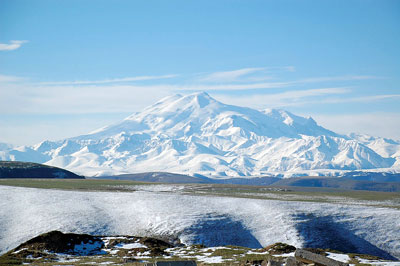 Mt Elbrus at 5642m in Russia (Europe) |
 Mt McKinley at 6194m in Alaska (North America) |
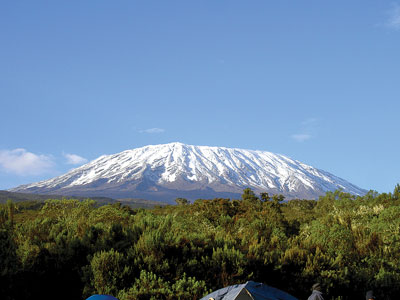 Mt Kilimanjaro at 5892m in Tanzania (Africa) |
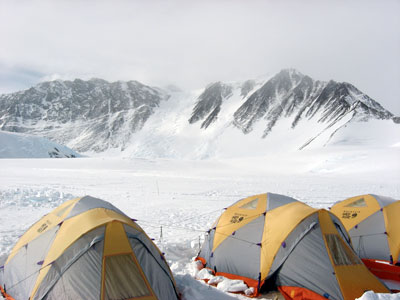 Mt Vinson Massif at 4892m in Antartica |
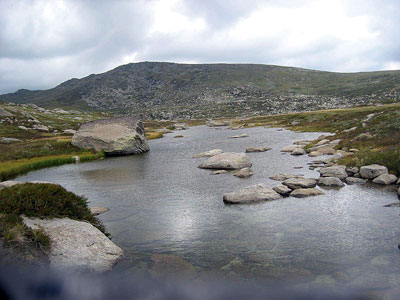 Mt Kosciuszko at 2228m in Australia |


